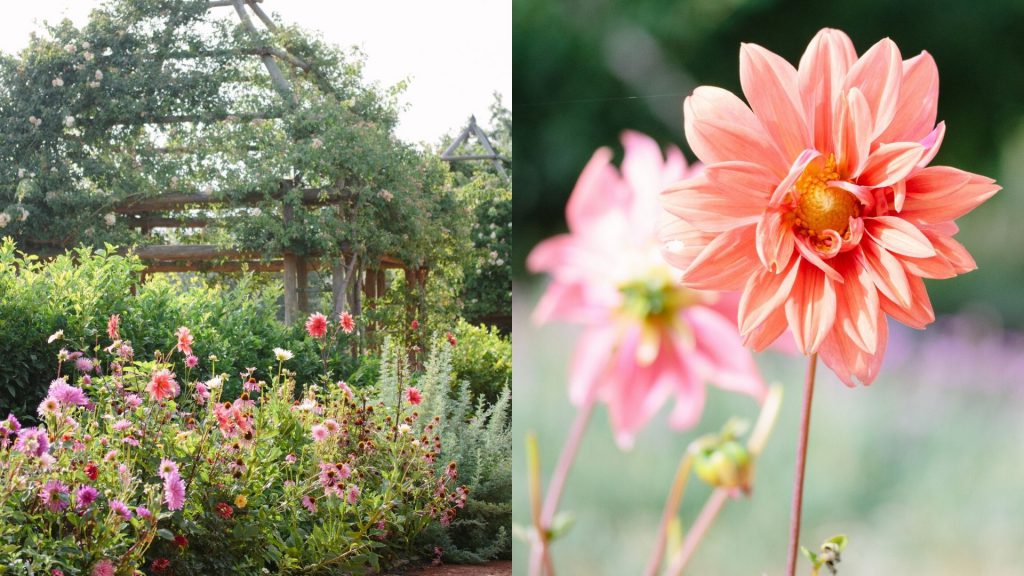
Restaurants
Spa
Day Visits
Shop
Functions
16°C
October 26th, 2021
Spring is already in full swing, but there is always time to plant appetising edibles for a bumper summer harvest.

Whether you’re a green-fingered garden gnome or only just starting out on your kitchen windowsill, spring is the time to let nature inspire you to plant your own edibles. But where to start!? Take heed of master gardener and flower food fundi Gundula Deutschländer’s advice and plant her five favourite spring plants. These quick growers will ensure edibles for your summer table – starting with the flowers and working all the way down to the roots.
Abundant, bright, delightful blooms … if you’re going to plant dahlias, it’s now or never!
In South Africa, dahlias are bought and sold as tubers and can be cultivated quite easily. Thanks to our climate, it’s also not necessary to dig up and replant tubers during the winter months. Instead of lifting the tubers as they do in Europe, ours can overwinter safely in the ground for an early sprouting the following year.
Avoid dahlia tubers that appear wrinkled or rotten. Pink buds on the tubers or a little bit of green growth are good signs.
Apart from being beautiful, dahlia flowers and tubers are also edible! The tubers can have a nutty taste, but flavours vary depending on the soil and conditions in which they were grown. The redder the tuber, the more flavourful. Grate and fry them with butter as a crispy rösti, or pickle them to make your own flower power kimchi.

By spring it is already too late to plant a deciduous fruit tree, but you can mimic a tall tree with hanging fruits by planting climbing beans! There are many new varieties to choose from, so be bold and plant something new.
Bean seeds can be planted directly into the soil, about 20–30 cm apart. A failproof tip for growing beans, Gundula says, is to soak the seeds in tepid water for about 30 minutes before planting. Then, make a 2 cm indent in the soil, place the seed, and properly cover it with soil. To aid the germination process, water the seeds regularly for three to four days. Once you have plants, continue watering once every two to three days to support the growth.
Beans are a known superfood crammed with good proteins, fibre, folate, iron, potassium and magnesium while containing little to no fats, sodium or cholesterol.
Lemongrass is not the most attractive plant, but it thrives both in the soil or in a pot placed in a warm spot. In the hot summer months, the tops of the leaves can be cut and knotted neatly to be added to the pot when you boil rice for a permeating flavour.
You can propagate your own lemongrass from store-bought stalks. Use fresh lemongrass that still has the entire stem, including the stem base, intact. Place the stalks in water and wait for roots to sprout. This may take up to two weeks. Refresh the water regularly. As soon as small roots appear, plant each stem in nutrient-rich soil, about 70 cm apart in full sun.
Lemongrass also loves being cut back, so the more you harvest, the more it will encourage new growth. Be warned, however, that frequent harvesting will demand frequent feeding with organic fertiliser and compost to ensure continuous regrowth.
Lemongrass also loves being cut back, so the more you harvest, the more it will encourage new growth. Be warned, however, that frequent harvesting will demand frequent feeding with organic fertilizer and compost to ensure continuous regrowth.
Use your harvest bounty to whip up all your favourite south-east Asian foods, including fresh lemongrass iced tea – the perfect summer refresher.

No kitchen garden is complete without a hardy rosemary shrub with its unique herby flavours. Whether you prefer the classic Mediterranean variant or our very own indigenous South African rosemary, aka wild rosemary, now is the time to plant yours.
Wild rosemary is a common veld herb of the Cape that is easily identifiable by its thin, grey leaves, which smell like Vicks when crushed! It is also a well-known medicinal plant and an excellent shrub for the waterwise gardener.
It’s best to start new rosemary plants – classic or indigenous – is by using cuttings taken from established plants. Cuttings grow quickly and should be ready for outdoor planting in about eight weeks.
Apart from its unmissable flavour in Mediterranean cuisine, a sprig of rosemary adds the perfect savoury note to a summer tipple. Try it with Babylonstoren bitterlekker as a pre-dinner drink.
Now is the time to grow your own sweet potatoes from seedlings. They’re keen climbers and will thrive in all healthy soils. “I’ve had success growing them in hanging baskets on the stoep,” Gundula says. “However, the larger your pot, the bigger your yield of sweet potatoes will be in three to four months’ time.” They’re super keen growers and will even climb out of the pot if they feel crammed!
To produce tasty spuds, the plant’s foliage prefers full sun and as a double bonus, the leaves are delicious used as a substitute for spinach or other leafy greens.
